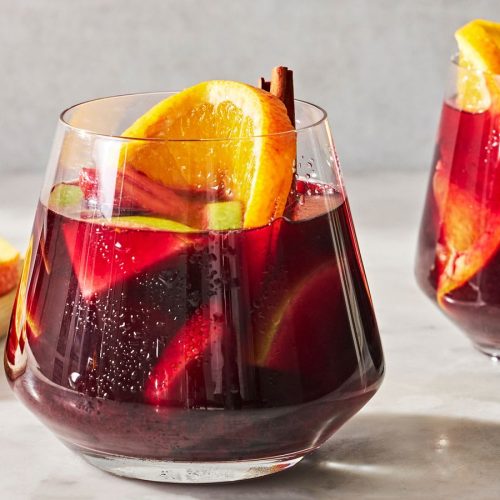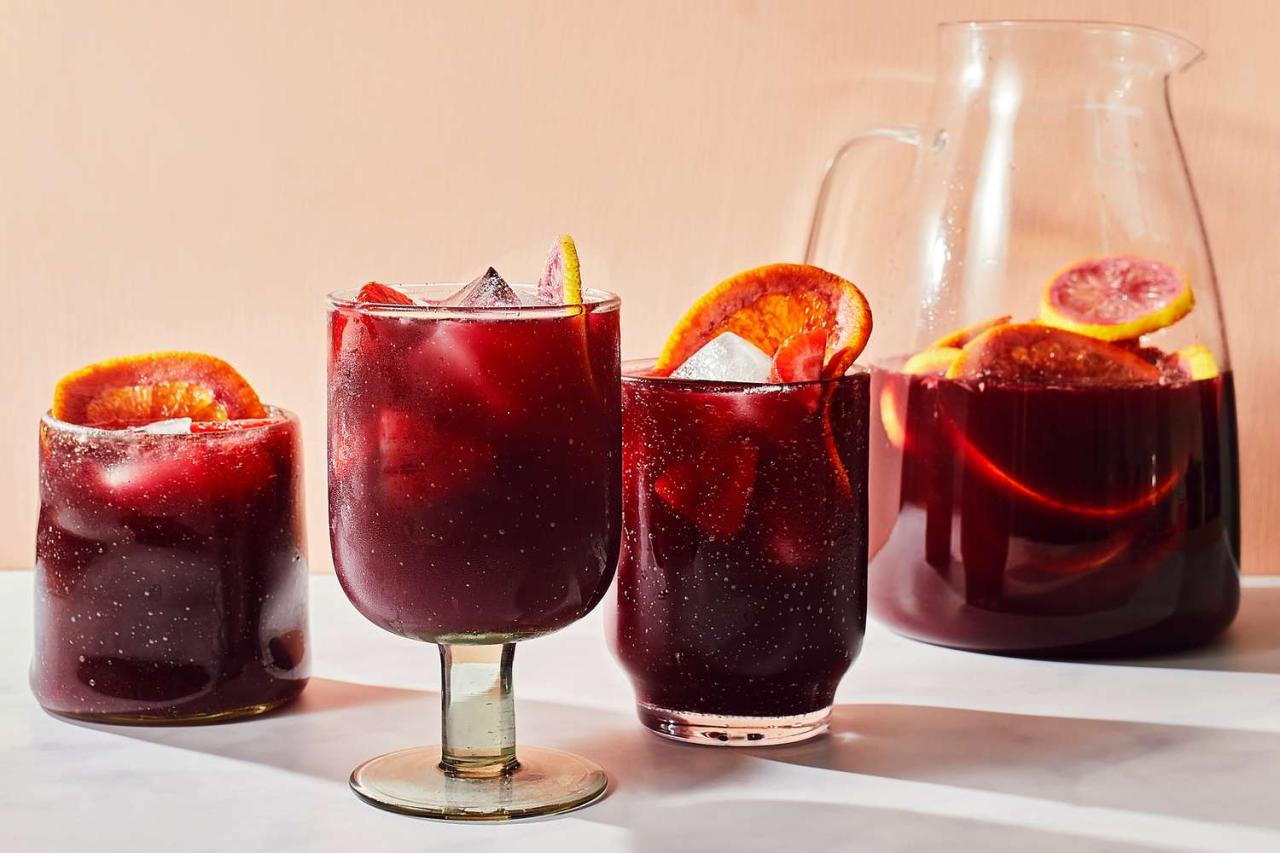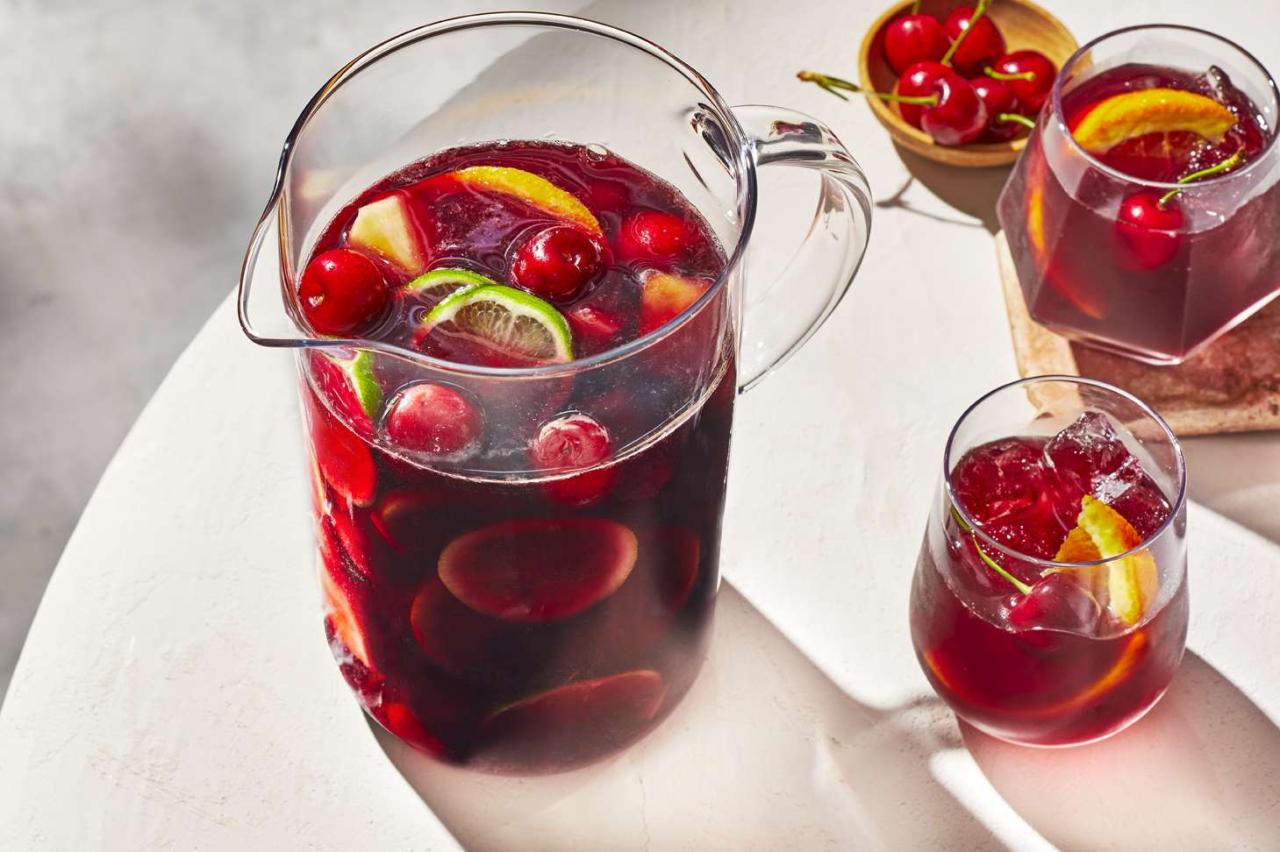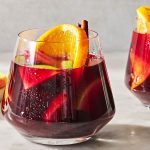On a sun-drenched journey through the vibrant heart of Spain, I was charmed by an iconic beverage that epitomizes the spirit of Spanish leisure and festivity: Sangria. This refreshing concoction, brimming with the bold flavors of Spanish red wine, the citrusy zing of oranges, and a hint of cinnamon, captured the essence of Spanish summer in every sip. The magic of Sangria lies not just in its ingredients but in the way it brings people together, offering a taste of Spain’s rich culture and tradition.
The curiosity stirred by my first encounter with this delightful drink inspired me to delve into the art of making Sangria at home. With a careful blend of fragrant oranges, the warmth of cinnamon, and the robust character of traditional Spanish red wine, I endeavored to recreate the enchantment I felt upon that first taste. Now, I’m eager to share this recipe with you. More than just a beverage, this Sangria recipe is a celebration of discovery and the joy of sharing a piece of my travels. Join me in bringing a splash of Spanish exuberance to your table, one glass at a time.

Sangria
Equipment
- 1 large jug
Ingredients
- 1 lemon
- 1 cinnamon stick
- 2 oranges
- 1 green apple
- 1/2 cup brandy
- 2 bottles of Spanish red wine
Instructions
- In a large jug, combine the wine, cognac, fruit juice, chopped orange, sliced apple, sliced lemon, and bay leaf.
- To mix, stir everything together.
- If necessary, add a few teaspoons of sugar to taste.
- Put it in the fridge for at least a few minutes or up to four hours, covered.
- Serve the sangria over ice, with a dash of bubbly soda (or fizzy water) added to each glass if preferred.
Cooking tips about Sangria

- Wine Selection: The foundation of any good Sangria is the wine. Choosing a Spanish red wine that’s fruity and not too aged (like a Tempranillo, Garnacha, or even a young Rioja) will give your Sangria an authentic taste. However, not too precious on the wine—your mix-ins will be the star!
- Fruit Choices: Oranges are a must for their citrus zing, but feel free to get creative with other fruits. Apples, peaches, berries, and even pineapple can add layers of flavor. Use fresh fruits for the best taste and let them macerate for a few hours or overnight to release their juices and absorb the wine.
- The Sweet Balance: Traditional Sangria isn’t overly sweet, but a little sweetness can enhance the fruit flavors and wine’s natural notes. Depending on your preference, you can use simple syrup, honey, or even orange juice to sweeten your Sangria. Start with a small amount and adjust to taste.
- Spice It Up: A hint of cinnamon can add a warm depth to your Sangria, making it even more intriguing. You can infuse the wine with a cinnamon stick during the maceration process. Just remember, a little goes a long way!
- Chilling: Sangria benefits greatly from being chilled for several hours, allowing the flavors to meld beautifully. It’s a perfect make-ahead drink for gatherings. Serve it chilled or with a bit of ice, but be cautious not to dilute it too much.
- Top Off with Fizz: For a lively touch, adding a splash of sparkling water or soda to your Sangria right before serving can lighten it up and add a refreshing effervescence. Be careful to not overdo it and overshadow the Sangria’s robust flavors.
- Serving Touches: Serve your Sangria in a clear pitcher or a bowl to show off the beautiful colors of the wine and fruit. Providing a spoon or ladle allows guests to scoop out pieces of the macerated fruit, ensuring they get a little bit of everything in their glass.
Serving suggestions about Sangria

- Presentation: Serve your Sangria in a large, clear pitcher or a glass beverage dispenser. This allows the beautiful colors of the wine, fruits, and spices to shine, making it an inviting centerpiece for any gathering.
- Ice Options: Instead of adding ice directly to the pitcher (which can dilute the Sangria as it melts), consider serving it alongside. Alternatively, make ice cubes from the same wine used in the Sangria or use frozen fruit pieces to keep the drink chilled without watering it down.
- Fruit Varieties: Though oranges and lemons are classic choices, don’t hesitate to get creative. Add slices of other fruits like apples, pears, peaches, or berries for additional flavor and color. Encourage guests to spoon some of these macerated fruits into their glasses for an extra treat.
- Glassware: Serve Sangria in wine glasses or sturdy tumblers. Garnish each glass with a fresh slice of fruit or a small cinnamon stick for a decorative and flavorful touch.
- Fizzy Finish: Just before serving, consider adding a splash of sparkling water, lemon-lime soda, or even cava (Spanish sparkling wine) to the Sangria for a refreshing effervescence. This lightens the drink and adds a festive sparkle.
- Accessories and Accompaniments: Provide guests with small skewers or toothpicks for spearing fruit pieces from their glasses. Serve Sangria alongside light appetizers, such as tapas, cheese platters, or seafood dishes, to complement its fruity and refreshing characteristics.
- Themed Decor: For a themed party or special occasion, embellish your serving area with Spanish-inspired decorations. Think vibrant tablecloths, flamenco music in the background, and floral arrangements to set the mood.
Top 5 FAQs about Sangria

- What is Sangria and where does it originate?
Sangria is a traditional Spanish beverage known for its refreshing and vibrant character, stemming from a delightful blend of Spanish red wine, citrus fruits like oranges, and a touch of cinnamon. Originating from Spain, Sangria is deeply woven into the country’s festive culture and leisurely way of life, embodying the spirit of Spanish summer and convivial gatherings. - What are the essential ingredients in Sangria?
The foundational ingredient in Sangria is Spanish red wine, typically a fruity variety such as Tempranillo, Garnacha, or a young Rioja, which lends the drink its characteristic robust flavor. Citrus fruits, especially oranges, add a zestful vibrancy. A subtle hint of cinnamon introduces warmth and complexity. While these are the core ingredients, Sangria can also incorporate other fresh fruits, sweeteners, and sometimes a splash of sparkling water or soda for added effervescence. - How do you achieve the best taste in Sangria?
Achieving the perfect taste in Sangria involves balancing the bold flavors of the wine with the freshness of various fruits and adjusting the sweetness to your preference. Allowing the fruits to macerate for a few hours or overnight helps them to absorb the wine and release their juices, enhancing the overall flavor. A slight addition of cinnamon adds depth, while the choice and amount of sweetener (such as simple syrup, honey, or orange juice) can be adjusted to taste. - Can Sangria be made ahead of time?
Yes, Sangria benefits greatly from being prepared ahead of time. Chilling Sangria for several hours allows the flavors to meld together beautifully, making it an ideal make-ahead drink for social gatherings. It’s recommended to serve Sangria chilled or with a bit of ice to maintain its refreshing quality without diluting the flavors excessively. - What are some serving tips for Sangria?
It’s best to serve Sangria in a large, clear pitcher or glass beverage dispenser to showcase the beautiful colors of the wine and fruits. To prevent dilution, avoid adding ice directly to the pitcher; instead, consider serving it alongside or using frozen fruit pieces or wine ice cubes. Just before serving, a splash of sparkling water or soda can add a refreshing effervescence. Offering a spoon or ladle allows guests to enjoy the macerated fruits in their glass, enhancing the drinking experience.

Leave a Reply